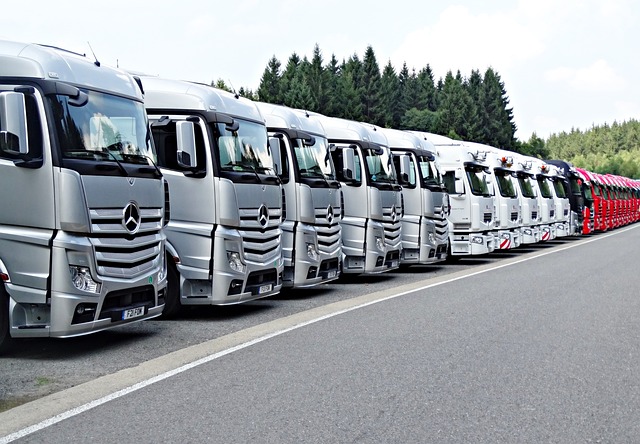Learn how to register a car in California with our comprehensive guide. Discover the essential steps, from understanding state requirements to gathering vital documents, using a VIN verifier for authenticity checks, completing the application process, and paying fees. Ensure a smooth registration experience and hit the road legally with confidence. This step-by-step approach incorporates key terms like ‘vin verifier’ for an efficient navigation through California’s car registration process.
- Understanding California Car Registration Requirements
- Gathering Necessary Documents for Registration
- Using VIN Verifier to Ensure Vehicle Authenticity
- Completing the Registration Application Process
- Paying Fees and Obtaining Your Registration Certificate
Understanding California Car Registration Requirements

Before registering your car in California, it’s crucial to understand the state’s specific requirements and procedures. One key aspect is ensuring that your vehicle’s Vehicle Identification Number (VIN) is accurately verified. This process, often referred to as a VIN inspection or check, is essential to confirm the vehicle’s authenticity and history. In California, this verification can typically be done through various methods, including using a mobile VIN verifier or completing an online check.
The state requires that all vehicles meet certain safety standards and emissions regulations before registration. Additionally, you’ll need to have valid insurance and provide proof of ownership. A mobile VIN inspection or check using an app can streamline this process by quickly verifying the VIN and ensuring your car meets California’s requirements. This step is a game-changer in simplifying the registration process, especially for folks who prefer a more convenient and efficient approach.
Gathering Necessary Documents for Registration

Before registering your car in California, ensure you have all the required documents ready. The process begins with gathering essential information and proof of ownership. One critical step is to obtain a Vehicle Identification Number (VIN) verification, which can be done through various methods, including a mobile vin verifier or visiting a designated inspection station. This verification ensures the vehicle’s authenticity and history, a crucial aspect in the registration process.
Additionally, you’ll need documents like the title certificate, which proves ownership, and valid identification, such as a driver’s license. It is also advisable to have proof of insurance and any relevant repair or service records, especially if the vehicle has been involved in previous accidents. Proper documentation ensures a smoother registration experience and helps avoid potential delays.
Using VIN Verifier to Ensure Vehicle Authenticity

When registering your car in California, ensuring the vehicle’s authenticity is a vital step to protect against fraud and ensure safety standards. One effective tool for this purpose is a VIN (Vehicle Identification Number) verifier. This service, often accessible through a mobile vin verifier app, allows you to cross-reference the VIN with reliable databases to confirm the vehicle’s history and condition.
A comprehensive vin inspection can reveal crucial information about the car’s past, including ownership records, accident history, and whether it has been properly maintained. By utilizing a mobile vin verification tool, California residents can have peace of mind knowing that their new or used vehicle is legitimate before completing the registration process.
Completing the Registration Application Process

Completing the registration application process involves a few key steps. First, gather all necessary documents, including your vehicle’s registration from the previous state, proof of insurance, and identification. Then, fill out the California Vehicle Registration Application (DMV Form REG-123). This form requires detailed information about your vehicle, such as its make, model, year, and VIN (Vehicle Identification Number), which can be easily verified using a mobile vin inspection or mobile vin verification service.
Make sure to double-check the accuracy of all information before submitting. Once you’ve completed the application, you’ll need to pay the registration fee and schedule an appointment for your vehicle’s vin inspection. This involves a brief inspection at a DMV office to ensure your car meets safety standards. After passing the inspection, your vehicle will be registered, and you’ll receive your new California license plate.
Paying Fees and Obtaining Your Registration Certificate

After ensuring your vehicle’s necessary documents are prepared, it’s time to focus on the registration process and associated fees. In California, registering a car involves paying several charges, including a registration fee and a vehicle identification number (VIN) verifier cost. The VIN verifier fee is a one-time charge for checking the authenticity of your vehicle’s VIN, which is crucial in preventing fraud.
One convenient option available in California is the mobile VIN verification service. This allows you to have a professional conduct a vin inspection right at your location, saving time and effort compared to traditional methods. By utilizing these modern solutions like mobile VIN verifier, the process becomes smoother and more efficient. Once all fees are paid and documents verified, you’ll receive your Registration Certificate, marking the successful completion of your car registration in California.
Registering a car in California involves understanding key requirements, gathering essential documents, ensuring vehicle authenticity with a VIN verifier, completing an application process, paying relevant fees, and obtaining your registration certificate. This comprehensive guide navigates each step, making the process efficient and straightforward for folks in the Golden State. Remember that staying informed and adhering to these procedures ensures legal compliance and peace of mind on California’s bustling highways.



